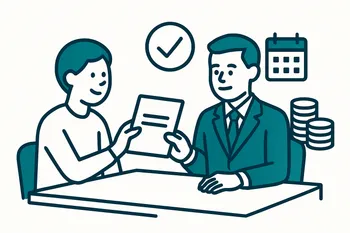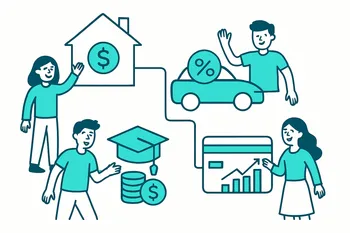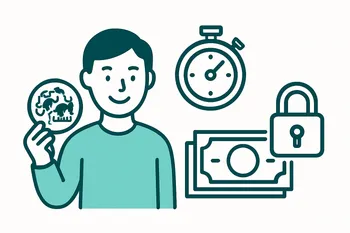Navigating Emergency Loans: Quick Financial Support When You Need It
- Personal Finance
- 04 Mins read

Navigating Emergency Loans: Quick Financial Support When You Need It
Life can throw unexpected expenses your way. Whether it’s a sudden medical bill, car repair, or urgent home maintenance, sometimes you need cash fast. Emergency loans offer a way to access funds quickly, helping you manage unforeseen financial hurdles without derailing your finances. In this post, we'll explore how emergency loans work in Australia, the best ways to access them responsibly, and practical tips to ensure you make informed decisions.
What Are Emergency Loans?
Emergency loans are short-term financial solutions designed for urgent situations. Unlike regular personal loans, which might take days or weeks to process, emergency loans prioritize speed. They are usually small amounts, meant to cover pressing expenses until you can get more stable funding.
For example, if your car breaks down right before important appointments, an emergency loan can help cover repairs immediately. These loans often have higher interest rates compared to standard loans because of their quick approval process.
Key features of emergency loans:
- Fast approval, sometimes within hours
- Small amounts (usually up to $5,000)
- Short repayment periods
- Higher interest rates due to urgency
How Do Emergency Loans Work in Australia?
In Australia, emergency loans are accessible through various providers—banks, credit unions, online lenders, and some payday lenders. Each has different eligibility criteria and terms.
Types of Emergency Loans Available
- Personal Loans: These are unsecured loans that don’t require collateral. They can be approved quickly if you have a good credit history.
- ** payday loans:** Designed for immediate needs, these are small, short-term loans with high interest. Be cautious—these can become expensive if not managed carefully.
- Family Emergency Loans: Some community organisations or non-profits offer interest-free or low-interest loans for critical needs.
Accessing Emergency Loans Quickly
To get funds fast, ensure you have the necessary information ready:
- Proof of identity (driver’s license, passport)
- Evidence of income (pay slips, bank statements)
- Details of the expense (invoice, medical bill)
Many lenders provide online applications that can be approved within minutes, with funds deposited into your account usually on the same day or within 24 hours.
Responsible Borrowing: Know the Limits
While emergency loans can come to the rescue, they are not a solution for ongoing financial hardship. Before borrowing, ask:
- Can I afford the repayments?
- Will this loan solve my problem or just delay it?
- Is there a lower-cost alternative like a repayment plan or assistance from charities?
Remember: High-interest rates and quick approvals can sometimes trap you in a cycle of debt if you're not careful.
The Pros and Cons of Emergency Loans
Advantages
- Speed: Get cash quickly when you need it most.
- Accessibility: Easy to apply, often online.
- Flexibility: Cover various unexpected expenses.
Disadvantages
- High costs: Fees and interest can be steep.
- Potential debt trap: Easy access can lead to overborrowing.
- Impact on credit: Failing to repay on time can harm your credit rating.
Responsible Borrowing Tips
- Assess your needs first: Is this expense urgent? Can it wait? Are there cheaper options?
- Compare providers: Check interest rates, fees, and repayment options.
- Read the fine print: Understand all terms before signing.
- Plan your repayment: Know how you will pay back the loan on time.
- Avoid multiple payday loans: Multiple short-term loans can quickly snowball into unmanageable debt.
- Seek free financial advice: Organisations like Beyond Blue or Financial Counselling Australia can help you explore options.
"Borrow only what you need and can repay comfortably. Reckless borrowing can worsen your financial situation." — ASIC
Alternatives to Emergency Loans
Before rushing into an emergency loan, consider these options:
- Interest-free hardship programs: Some banks offer repayment relief if you’re struggling.
- Personal savings: Using savings reduces reliance on high-cost credit.
- Family or friends: Borrowing from trusted loved ones can avoid extra costs.
- Government support: Check if you're eligible for government assistance or grants.
- Payment deferrals: Contact service providers for extensions or temporary payment plans.
Mini-Scenario: When an Emergency Loan Made a Difference
Jane is a single mother in Sydney. Her car broke down unexpectedly, and she needed $2,000 for repairs. She applied online to a reputable lender with same-day approval. She carefully read the terms, understood the high interest, and planned to repay within two months using her upcoming bonus. The emergency loan helped her get to work without missing important commitments and prevented her financial situation from worsening. By approaching it responsibly, Jane avoided debt stress.
Final Thoughts: Be Prepared and Informed
Emergency loans are a useful tool in urgent situations, but they come with risks. Educate yourself about the costs involved and ensure you can repay comfortably. Always explore cheaper or alternative options first.
In my ten years as a financial advisor, I’ve seen many turn to emergency loans in moments of crisis. When used wisely, they can be a lifeline. When misused, they can deepen financial struggles.
Stay informed, borrow responsibly, and seek help if you feel overwhelmed. Managing emergencies is challenging, but with careful planning, you can navigate it successfully.
Key Takeaways
- Emergency loans provide quick funds but often at a high cost.
- Always assess urgency and explore alternatives first.
- Read all terms carefully before borrowing.
- Plan repayment realistically to avoid ongoing debt issues.
- Seek out free advice if unsure about your options.
Remember: a sudden expense doesn’t have to turn into a financial crisis. With knowledge and responsible action, you can get through tough times smoothly.



